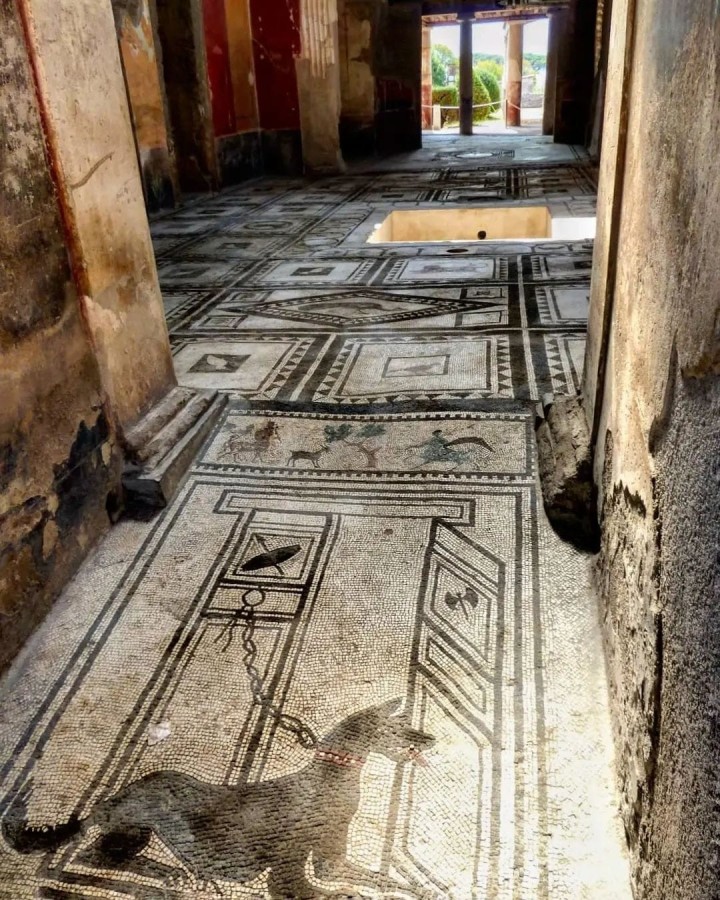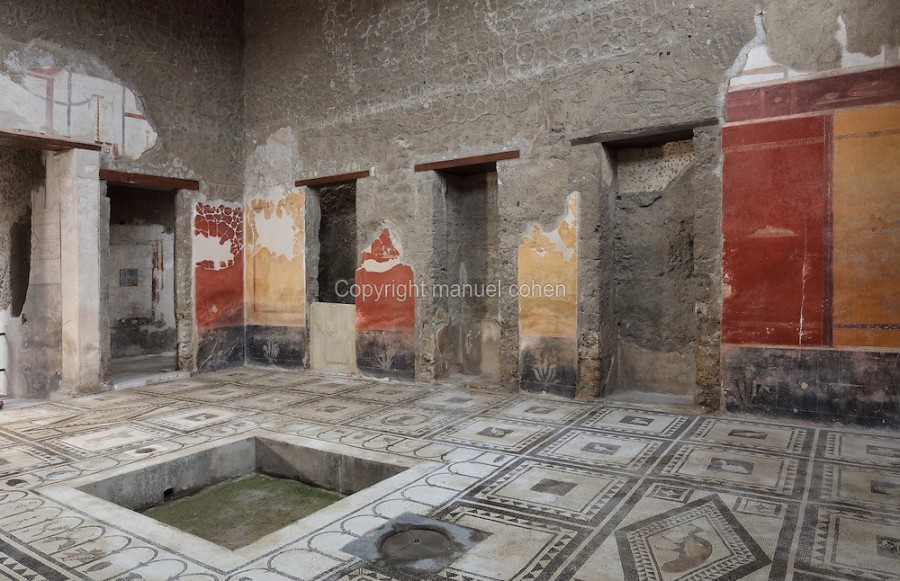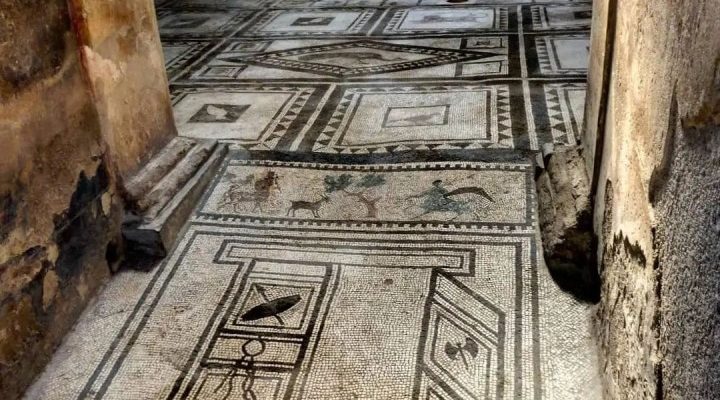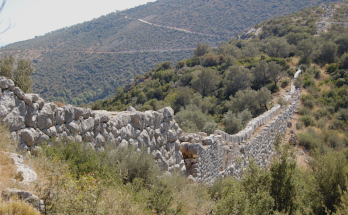Threshold and atrium of the House of Paquius Proculus (1st century AD). Pompeii archaeological site, Italy.
The first layout of the house (visible from outside) dates back to the Samnite period (2nd century BC) as indicated by the cubic capitals at the entrance, where the floor holds a mosaic depicting a chained dog crouched in front of an open door.

This subject is found in Pompeii in the decorations of the Imperial period as a symbol of the custody of the dwelling. The atrium is entirely covered with fine panelled mosaic with multi-coloured animals alluding to prosperity, and two portraits, one male and one female.

Atrium, with central impluvium or water tank, and mosaic floor with animals within black and white borders, 1st century AD, in the Casa di Paquio Proculo, or House of Paquius Proculus, Pompeii, Italy. The walls are decorated with red, yellow and black frescoes in the Fourth Style of Roman wall painting, 60-79 AD. Pompeii is a Roman town which was destroyed and buried under 4-6 m of volcanic ash in the eruption of Mount Vesuvius in 79 AD. Buildings and artefacts were preserved in the ash and have been excavated and restored. Pompeii is listed as a UNESCO World Heritage Site. Picture by Manuel Cohen





